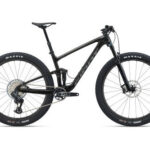Riding your dirt bike in the sand dunes or sandy terrains presents a unique set of challenges and thrills. To maximize your bike’s performance and your riding experience, selecting the right Dirt Bike Sand Tire is crucial. This guide dives into the essential considerations for choosing the best sand tire, ensuring you have the grip and control needed to conquer any sandy landscape.
Understanding Paddle Tires for Sand
When it comes to sand, regular knobby tires simply won’t cut it. Paddle tires are specifically designed for sandy conditions, utilizing scoops or paddles across the tire’s surface to dig into the sand and propel you forward. Choosing the right paddle tire involves several factors, including wheel size and paddle configuration.
Wheel Size and Tire Choice
The diameter of your dirt bike’s rear wheel plays a significant role in tire selection. For bikes with 19-inch rims, the Sedona Dunatik 8 paddle tire is often praised as an excellent choice. Its 8-paddle design provides a great balance of traction and floatation in most sand conditions.
If your bike uses an 18-inch rim, options like the 10-paddle version of the same model might be available, although the original text suggests the 10-paddle might be the only option in that specific model for 18″ rims at the time of writing. Always check current availability and model ranges as tire offerings evolve.
The Lighter, The Better: Weight Considerations
In sand riding, minimizing weight is key to maintaining momentum and responsiveness. Opting for a lighter dirt bike sand tire can significantly improve your bike’s handling and reduce rider fatigue. Heavier tires can bog down your bike, especially in soft sand, demanding more power and effort to maneuver.
Avoid tires with heavy center strips, such as molded Skat Trak tires, which, while durable, add unnecessary weight. While these might serve as backups, lighter paddle tires are preferable for optimal sand performance.
Preparing Your Wheels and Tires for Sand Riding
Beyond just selecting the right tire, proper wheel and tire preparation are essential for sand riding, especially when running lower tire pressures.
Tire Pressure: Finding the Sweet Spot
Lowering your tire pressure is crucial for sand riding as it increases the tire’s contact patch, providing better floatation and traction. A recommended starting point is around 6 psi for the front tire and 8 psi for the rear tire. However, always adjust tire pressure based on your bike, weight, riding style, and sand conditions.
Inspecting Wheel Spokes and Rim Integrity
Before heading to the dunes, meticulously check your wheel spokes for looseness. Low tire pressures and the flexing associated with sand riding can put extra stress on your wheels. Loose spokes can lead to wheel damage or failure.
Valve Stem Seals: Preventing Sand Intrusion
Running low tire pressures increases tire and tube flex, which can allow sand to creep around the valve stem and enter the wheel. Using rubber valve stem seals is a simple yet effective way to prevent sand from getting inside and causing tube wear over time.
Rim Strips: Protecting Your Tubes
Ensure your rim strip is in good condition. A worn or damaged rim strip can expose the tube to the spoke nuts, increasing the risk of pinch flats, especially with low tire pressures and the increased movement within the wheel while riding in sand. Consider installing a new rim strip for added protection, particularly if you’re setting up dedicated sand wheels.
Tube Selection: Lightweight and Durable
For sand riding, especially in areas like Glamis, consider using thinner tubes. Lighter tubes reduce rotational weight, contributing to improved handling. Some riders even prefer natural rubber tubes, known for their flexibility and ability to handle flexing better than some synthetic options. Multi-thickness tubes, like those mentioned as available from Rocky Mountain, offer a balance of durability and weight savings by being thicker in critical areas and thinner where possible.
Chain Considerations: Used vs. New Chains
When installing a paddle tire, especially a new one, be mindful of potential clearance issues with your bike’s rear linkage and mud flap. Newer chains can sometimes be tighter and cause the paddle tire to rub, particularly on bikes with less clearance. Using a slightly stretched, older chain can provide the necessary extra clearance to prevent rubbing and damage to your new paddle tire. Always inspect for proper clearance after installation.
By carefully considering these factors and taking the necessary preparation steps, you can confidently choose and set up the best dirt bike sand tire for your machine, ensuring a thrilling and successful sand riding experience.

